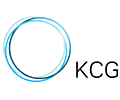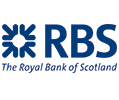What is Forex Technical Analysis? A Comprehensive Guide
Forex technical analysis is the method of evaluating currency pairs by examining historical price data, trading volumes, and other market statistics. Unlike fundamental analysis, which looks at economic indicators and news events, technical analysis relies solely on charts and technical indicators to predict future price movements.
By analyzing patterns, trends, and indicators, traders aim to make informed decisions on entry and exit points, maximizing their profit potential while managing risk. This approach is widely used by both beginner and professional traders to navigate the forex market effectively.

Why is Technical Analysis Important in Forex Trading?
Technical analysis is crucial for traders because:
- Objective Decision-Making: It removes emotional biases by relying on historical data and chart patterns.
- Market Timing: It helps traders identify optimal entry and exit points.
- Versatility: It can be applied to any trading timeframe, from short-term scalping to long-term investing.
- Enhanced Risk Management: Traders can set stop-loss and take-profit levels based on technical indicators.
According to the Bank for International Settlements, the daily trading volume in the forex market exceeded $7.5 trillion in 2022, making it the most liquid market in the world. This high liquidity makes technical analysis particularly effective, as patterns and trends are more reliable in large, active markets.
Key Concepts of Forex Technical Analysis
1. Price Charts
Price charts are the cornerstone of technical analysis. They visually represent historical price movements, helping traders identify trends and patterns. The most common types of charts are:
- Line Charts: Display closing prices over a specified period, suitable for identifying long-term trends.
- Bar Charts: Show the open, high, low, and close prices for each period, giving more detailed market information.
- Candlestick Charts: Popular among traders for their visual appeal and detailed price action, candlestick patterns can signal market reversals and continuations.
2. Trends and Trendlines
Trends show the general direction of a currency pair’s price movement. There are three types of trends:
- Uptrend: Higher highs and higher lows, indicating bullish market sentiment.
- Downtrend: Lower highs and lower lows, indicating bearish market sentiment.
- Sideways (Range-bound) Trend: Price moves within a horizontal range, reflecting market indecision.
Trendlines are drawn by connecting significant highs or lows, helping traders visualize the trend’s direction and potential breakout points.
3. Support and Resistance Levels
- Support Level: A price level where buying interest is strong enough to prevent the price from declining further.
- Resistance Level: A price level where selling pressure is strong enough to prevent the price from rising.
These levels act as psychological barriers, guiding traders in setting entry and exit points. Breakouts beyond these levels often indicate a trend continuation.
4. Technical Indicators
Technical indicators are mathematical calculations based on historical price, volume, or open interest. They provide signals for potential market movements. Popular indicators include:
- Moving Averages (MA): Smooth out price data to identify trends. Common types are Simple Moving Average (SMA) and Exponential Moving Average (EMA).
- Relative Strength Index (RSI): Measures the speed and change of price movements, helping traders identify overbought or oversold conditions.
- Moving Average Convergence Divergence (MACD): Shows the relationship between two moving averages, indicating potential trend reversals.
- Bollinger Bands: Consist of a middle band (SMA) and two outer bands representing price volatility.
5. Chart Patterns and Candlestick Formations
Chart patterns and candlestick formations help traders predict future price movements. Some of the most commonly used patterns are:
- Head and Shoulders: Signals a reversal in the current trend.
- Double Top and Double Bottom: Indicate trend reversals at key support and resistance levels.
- Triangles (Ascending, Descending, and Symmetrical): Suggest continuation or reversal of a trend, depending on the breakout direction.
- Doji Candlestick: Represents indecision in the market, often signaling a potential reversal.
Applying Technical Analysis in Forex Trading
Step 1: Identify the Trend
Start by analyzing the price chart to identify the prevailing trend. Use trendlines, moving averages, and RSI to confirm the trend’s strength.
Step 2: Determine Support and Resistance Levels
Pinpoint key support and resistance levels using historical price data. These levels provide strategic entry and exit points.
Step 3: Select Indicators and Chart Patterns
Choose relevant technical indicators and chart patterns that complement your trading strategy. For example, using RSI with moving averages provides a clearer picture of trend momentum.
Step 4: Execute and Manage Trades
Execute your trade once the technical indicators align with your trading strategy. Manage your risk using stop-loss and take-profit orders to protect your capital.
Conclusion
Forex technical analysis is an essential tool for traders aiming to navigate the complexities of the forex market. By mastering price charts, trends, indicators, and patterns, traders can make data-driven decisions that enhance profitability.
With FXCG’s robust trading platform, low commissions, and advanced charting tools, you can confidently apply technical analysis to your trading strategy. Ready to get started? Sign up for an FXCG account today and take the first step towards informed trading decisions.
before: What is Copy Trading?
next: New Trading hours_US DST


















